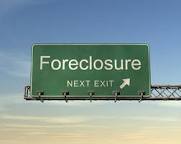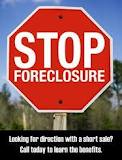
Options have been made available to homeowners trying to avoid foreclosure; options like repayment, mortgage modification, deed in lieu of foreclosure, Bankruptcy, and short sale. In this article we will take a look at these different options available to home owners who are in financial hardship.
Short Sale
If you are trying to avoid a foreclosure the most common method is to do a short sale. A short sale is for the homeowner  who has encountered a financial hardship that has caused them to be late on mortgage payments or for the homeowner who foresees their hardship taking a toll on their ability to pay their mortgage in the future. The lender will take a lesser pay off than what they are owed once the home is sold in a short sale. This is not done as a favor to the borrower, but only for the lender to also avoid expensive foreclosure expenses and minimize future loss. The action of a short sale will allow the homeowner to stop foreclosure and save the huge impact a foreclosure would have on their credit. A short sale will typically recover from a homeowner’s credit in a short period of time and leave them eligible to purchase a home again in just two years. In addition, in most cases the lenders will completely forgive the borrower of any deficiency or short fall in the money that they were originally owed. Lenders are very motivated to cut their losses with a short sale, and there are many cash back incentives offered to borrowers to complete a short sale.
who has encountered a financial hardship that has caused them to be late on mortgage payments or for the homeowner who foresees their hardship taking a toll on their ability to pay their mortgage in the future. The lender will take a lesser pay off than what they are owed once the home is sold in a short sale. This is not done as a favor to the borrower, but only for the lender to also avoid expensive foreclosure expenses and minimize future loss. The action of a short sale will allow the homeowner to stop foreclosure and save the huge impact a foreclosure would have on their credit. A short sale will typically recover from a homeowner’s credit in a short period of time and leave them eligible to purchase a home again in just two years. In addition, in most cases the lenders will completely forgive the borrower of any deficiency or short fall in the money that they were originally owed. Lenders are very motivated to cut their losses with a short sale, and there are many cash back incentives offered to borrowers to complete a short sale.
Bankruptcy
Another option for homeowners who want to stop foreclosure is bankruptcy, however; only in some states and situations can a bankruptcy be a foreclosure solution. Bankruptcy will not stop the foreclosure process but it will simply delay it if a homeowner cannot afford to continue with their mortgage payments. Filing for bankruptcy during a foreclosure can be expensive, it can result in a damaged credit score and can only be filed once every seven years. A bankruptcy can not only effect a borrowers current and future employment in many fields, but will also scar a borrowers credit for many years to come. As it may seem like an easy way out, bankruptcy should only be used as a last resort, as it comes with many consequences.
Repayment Plan / Forbearance
A forbearance is an option that is like a repayment plan, it is designed to allow the homeowner to pay back delinquent mortgage payments over a certain amount of time. This option is most successful in a situation when a borrowers hardship was only temporary, and they are already on the road to complete financial recovery. If the hardship is still not completely resolved at the time the borrower enters into the forbearance, it is typically only a temporary fix to a financial problem.
Loan Modifications
Another option for the homeowner who wants to avoid a foreclosure might be a mortgage modification. A mortgage modification can do one of the following; change the length of the loan, the principal balance of the loan, or the interest rate. When considering a mortgage modification, it is good to know that the homeowner can be in default, in foreclosure, in bankruptcy, late, or current at the time the application for a mortgage modification is made. Actual principle reductions in the mortgage balance are extremely rare and occur in less than 1% all loan modifications, with the vast majority of loan modifications still leaving borrowers still in a negative equity position. Usually the most successful loan modifications will bring the homeowners mortgage payments down but it is prolonging the loan term. Historically, loan modifications are offered as a temporary solution to borrowers, similar to putting a band-aide on a hemorrhage. In most cases they only prolong the inevitable downward path that financial hardship brings. Recently, many loan modifications have become good permanent solutions to borrowers whose hardship is temporary and who can easily afford a slightly lower payment.
Foreclosure
 While foreclosure should never be an option for most borrowers in hardship, it is the inevitable outcome if action is not taken. Going into foreclosure simply destroys a home owners credit and will make it impossible for a borrower to qualify for most loans in at least five years or more. Most importantly, after a foreclosure, a borrower is still liable for the original amount they owe their lender in many cases. This means that in most states, lenders can come after a defaulted borrowers vehicles and other assets years after a foreclosure is completed. Foreclosures seem like the easy and simple solution it can be the most costly to all parties.
While foreclosure should never be an option for most borrowers in hardship, it is the inevitable outcome if action is not taken. Going into foreclosure simply destroys a home owners credit and will make it impossible for a borrower to qualify for most loans in at least five years or more. Most importantly, after a foreclosure, a borrower is still liable for the original amount they owe their lender in many cases. This means that in most states, lenders can come after a defaulted borrowers vehicles and other assets years after a foreclosure is completed. Foreclosures seem like the easy and simple solution it can be the most costly to all parties.
Deed In Lieu of Foreclosure
A deed in lieu of foreclosure is an option that can be available to a homeowner in default that is already in foreclosure proceedings. Rather than continue with the foreclosure process this option can allow the homeowner to deed back the title to their home to their lender. Lenders will benefit from a deed in lieu because they won’t have to invest more time and capital resources in the foreclosure process and dealing with potentially vandalized property should the home sit for a long time after the foreclosure process. While this may seem like a good option to many home owners in hardship in order to “wash their hands” of the situation, there can still be severe penalties. In most cases, the borrower is still completely liable for the deficiency (loan balance less proceeds from final property sale), and their lender can and will pursue collections years up the road. Also, the impact to a borrowers credit and ability to purchase a property again in the future is nearly identical to a foreclosure.
foreclosure proceedings. Rather than continue with the foreclosure process this option can allow the homeowner to deed back the title to their home to their lender. Lenders will benefit from a deed in lieu because they won’t have to invest more time and capital resources in the foreclosure process and dealing with potentially vandalized property should the home sit for a long time after the foreclosure process. While this may seem like a good option to many home owners in hardship in order to “wash their hands” of the situation, there can still be severe penalties. In most cases, the borrower is still completely liable for the deficiency (loan balance less proceeds from final property sale), and their lender can and will pursue collections years up the road. Also, the impact to a borrowers credit and ability to purchase a property again in the future is nearly identical to a foreclosure.
It is important for homeowners to understand that they do have options available to avoid foreclosure and should immediately seek the guidance of a local short sale specialist or housing counselor as soon as they start to realize their financial situation could take a toll on their place of living. Contact us for no cost assistance and guidance during your time of greatest need.
